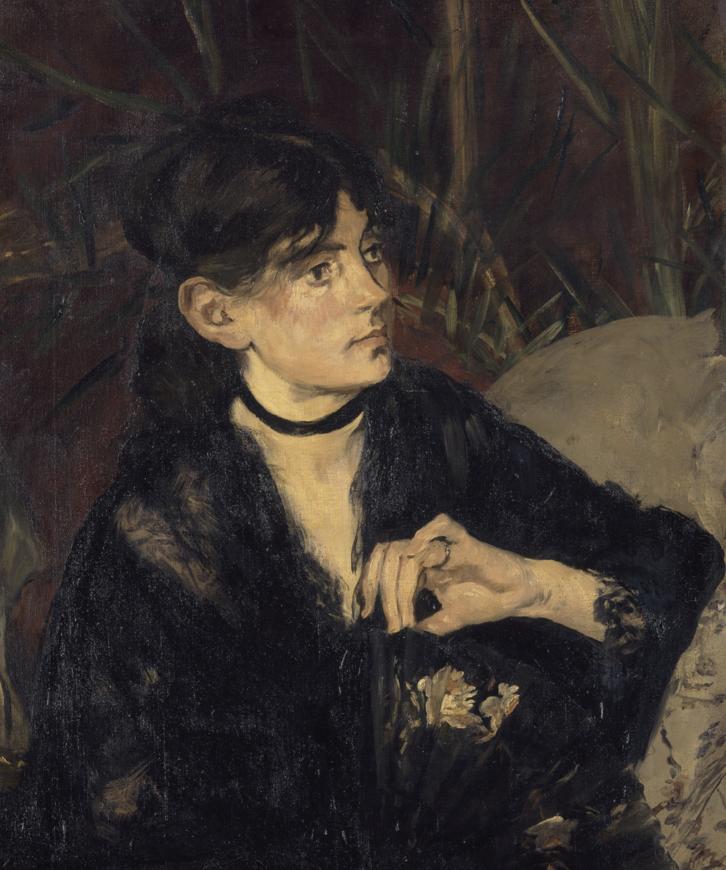Berthe Morisot is painted three-quarter length, dignified and proud, her left arm bent in a spontaneous gesture. She turns away her gaze, not without mischievousness, as if trying to prevent her friend from doing an accurate portrait of her.
The young woman is dressed in black. She is in mourning, following the death of her father. The fan emphasizes her femininity and the elegance of her long artist's hands. This subject recalls how much Manet admired the masters of Spanish painting, such as Velasquez and Goya. The decor is understated so as not to distract the eye. A plant-inspired motif recalls the Japanese style highly prized at the time.
Black dominates. It will become Manet's signature. The look is frank, deep, and also sensual. It is because "her eyes [...] were, as Paul Valéry reminds us, almost too huge and so profoundly dark that Manet [...], to capture all their dark and magnetic force, painted them black instead of greenish they were".
1874, the date when this portrait was painted, was a special year. It was that of the marriage of Berthe Morisot with Eugène Manet, the artist's brother. It was also the year of the first Impressionist exhibition, held in the margins of the official Paris Salon. The modern art revolution was taking off, and the painter and his model were two prominent figures.
Inventory number: D. 2000-1-1
Detail 1: The velvet ribbon attached around the neck and the black lace at the collar and wrist emphasise the pale and delicate complexion of the model.
Detail 2: The alliance which the young woman highlights here makes it possible to put forward the idea that the picture was perhaps offered to her by Edouard Manet as a wedding present.

Berthe Morisot is painted three-quarter length, dignified and proud, her left arm bent in a spontaneous gesture. She turns away her gaze, not without mischievousness, as if trying to prevent her friend from doing an accurate portrait of her.
The young woman is dressed in black. She is in mourning, following the death of her father. The fan emphasizes her femininity and the elegance of her long artist's hands. This subject recalls how much Manet admired the masters of Spanish painting, such as Velasquez and Goya. The decor is understated so as not to distract the eye. A plant-inspired motif recalls the Japanese style highly prized at the time.
Black dominates. It will become Manet's signature. The look is frank, deep, and also sensual. It is because "her eyes [...] were, as Paul Valéry reminds us, almost too huge and so profoundly dark that Manet [...], to capture all their dark and magnetic force, painted them black instead of greenish they were".
1874, the date when this portrait was painted, was a special year. It was that of the marriage of Berthe Morisot with Eugène Manet, the artist's brother. It was also the year of the first Impressionist exhibition, held in the margins of the official Paris Salon. The modern art revolution was taking off, and the painter and his model were two prominent figures.
Inventory number: D. 2000-1-1
Detail 1: The velvet ribbon attached around the neck and the black lace at the collar and wrist emphasise the pale and delicate complexion of the model.
Detail 2: The alliance which the young woman highlights here makes it possible to put forward the idea that the picture was perhaps offered to her by Edouard Manet as a wedding present.